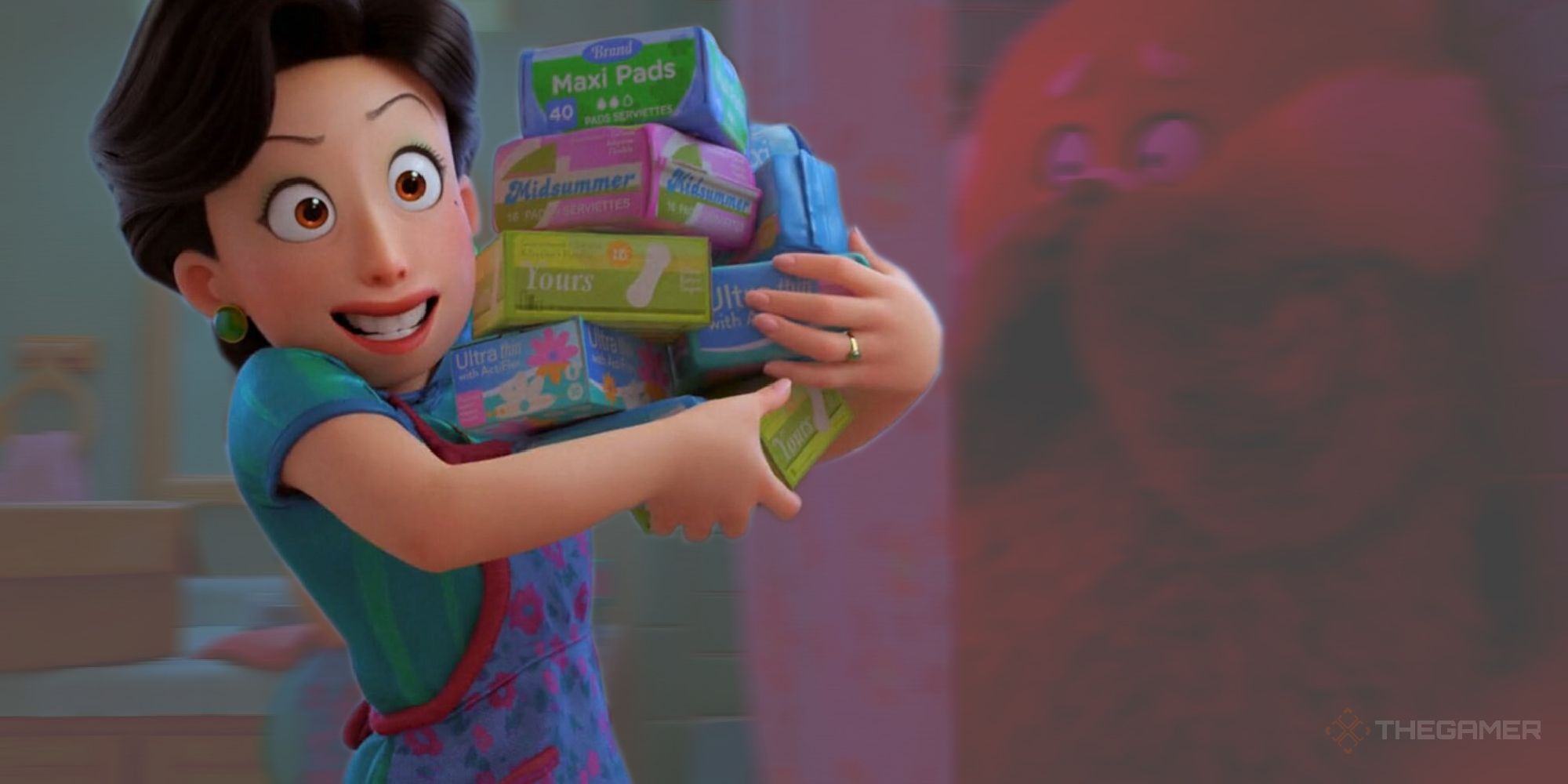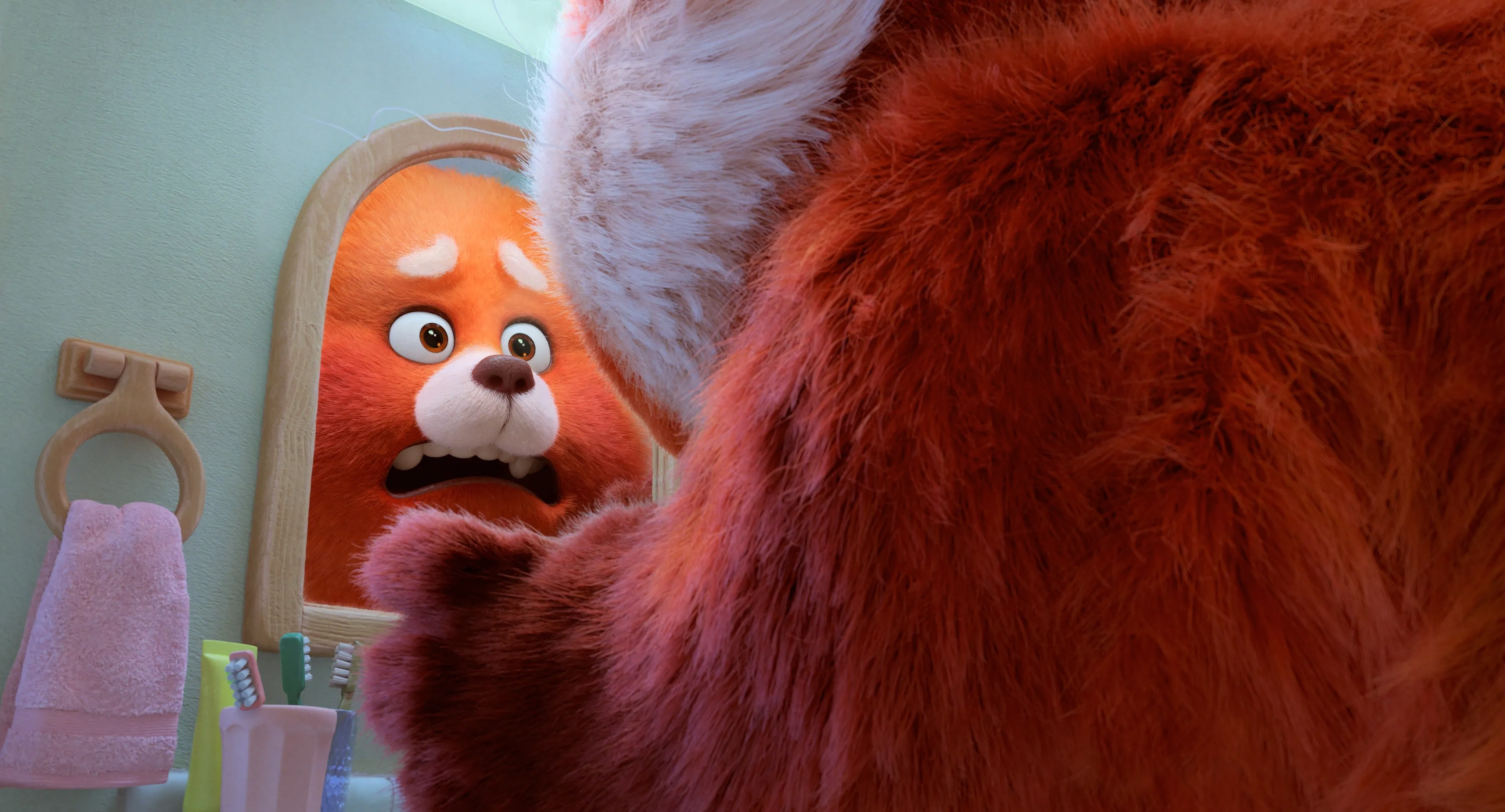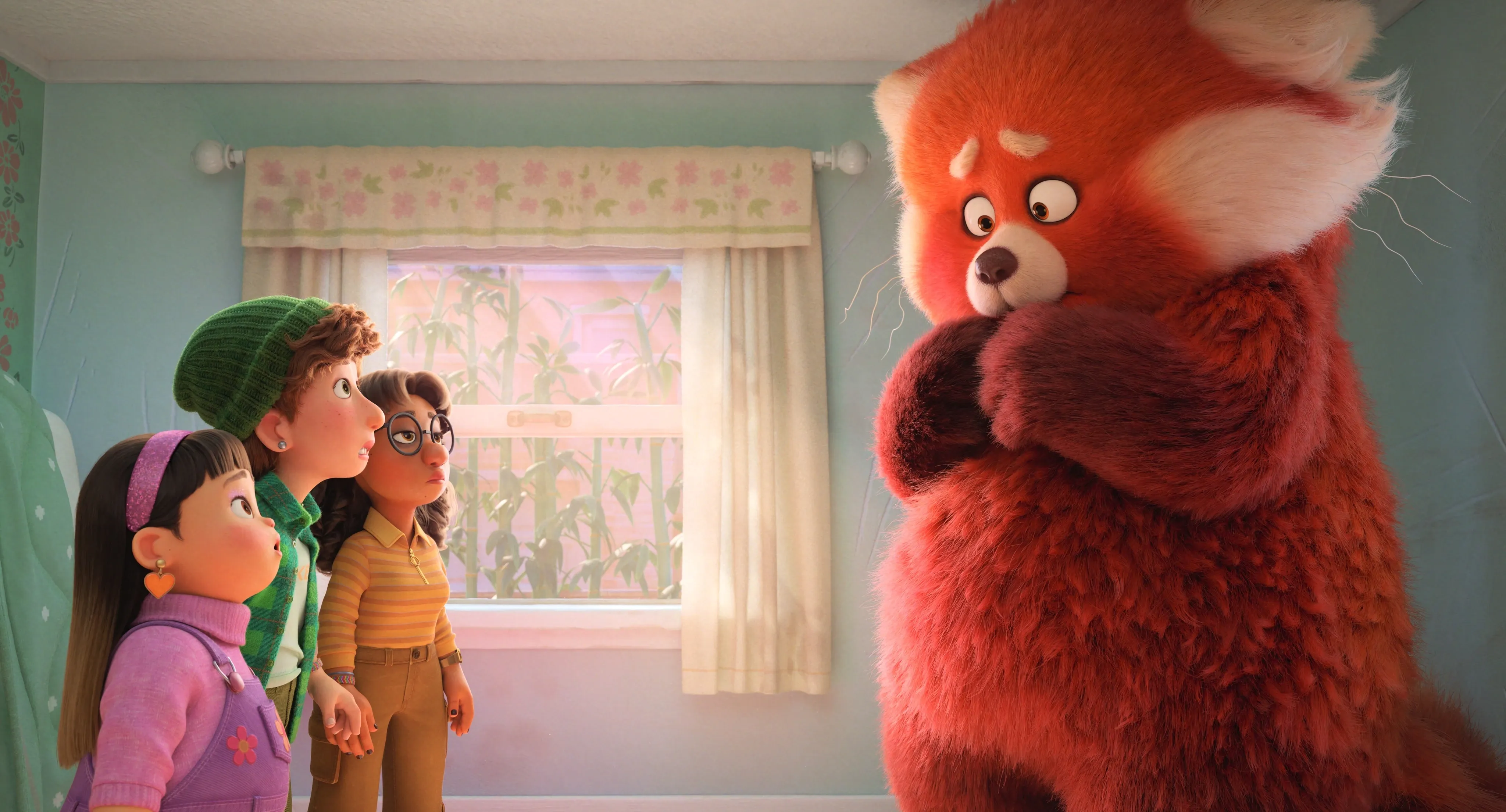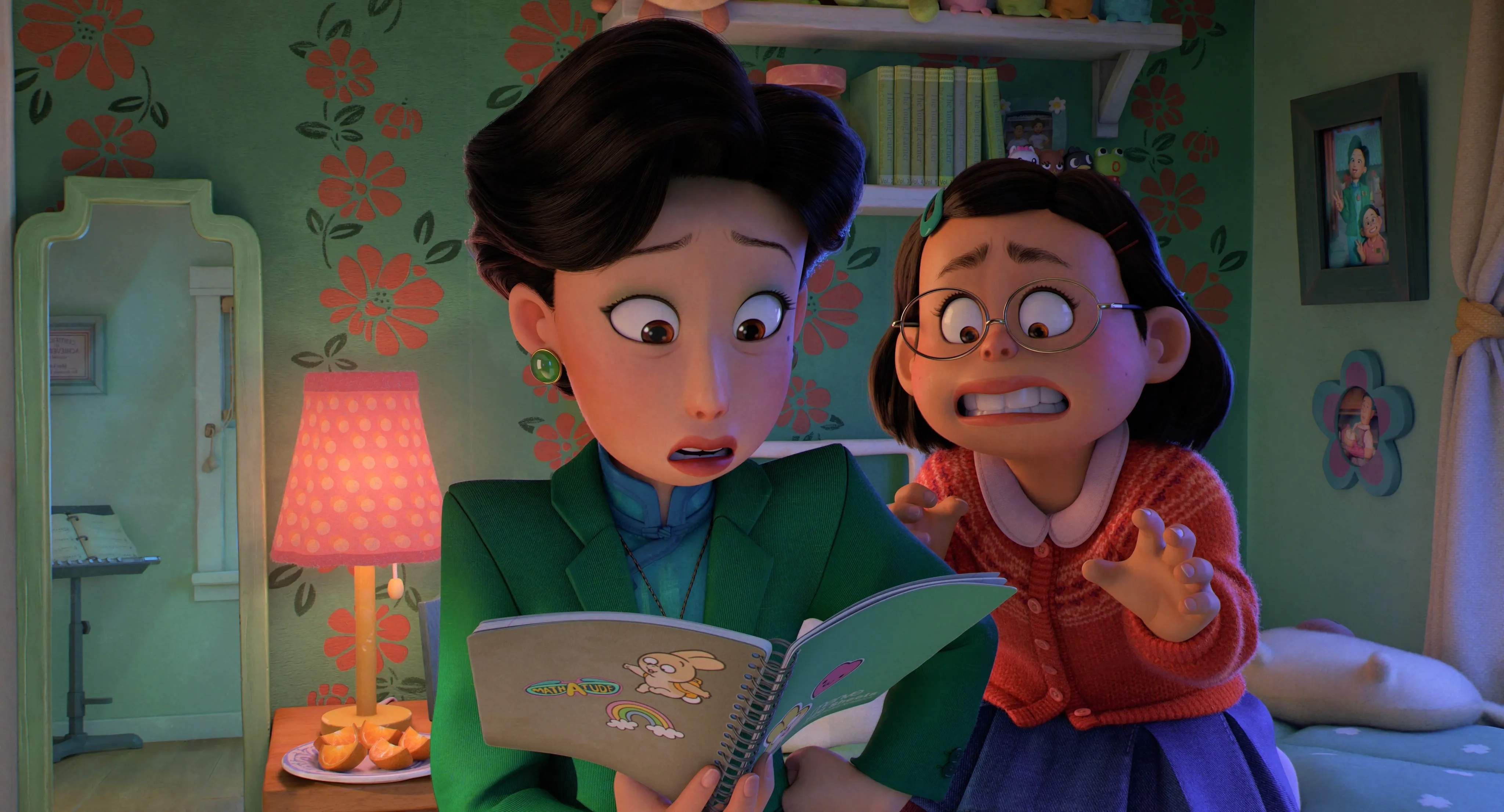Pixar’s Turning Red is bursting with youthful energy, fresh ideas, and a wondrous central narrative about family and acceptance that hits harder than anyone could have expected. It rules, and feels like the start of something new from the animation studio as a storyteller. We need more films like this, partly because it’s so real.
True, Meilin Lee’s hereditary transformation into a giant red panda as a response to any form of emotion isn’t going to happen in reality, but the message it represents is something young girls go through as they usher into womanhood. Turning Red is filled with references to growing up, whether it’s Mei’s desire to see 4Town with her friends, or developing newfound crushes on awkward convenience store losers. Children will see themselves in her struggles, learning that it’s totally okay to stand apart from your guardians and rebel for the betterment of everyone. I mean, so long as you aren’t murdering anyone or smoking the Devil’s lettuce.
She’s maturing, but finding herself becomes increasingly difficult when attached to a caring mother who wants the best for her, so much so that it stifles all forms of growth she hopes to facilitate. I come from a white family so can’t speak to how Turning Red echoes the experience of coming from an Asian upbringing like this, but the overarching messages about adolescent rebellion and learning to stand on your own is something that shines across all races, and one Pixar is all too keen to emphasise throughout.
I could be here all day talking about fascinating lessons learned from Turning Red and the observations many will take away from its depiction of generational trauma, but there’s one particular scene I want to focus on. Early in the film, Mei awakens and finds herself having transformed into a giant red panda. She has no idea what to do, freaking out about being seen like this and having to confront embarrassing problems at school without coming across as both a literal and figurative wild animal. She crashes about the place, making a mess of her room before rushing into the bathroom with a scream.
Caring as she is, Mei’s mother quickly springs into action in an effort to find out what’s wrong. She’s gentle and considerate, speaking with a hushed tone as Mei cries out. While she’s aware of her family’s habit of turning into giant pandas, it isn’t the first thing that comes to mind. It feels too early for this transformation, and thus it’s brushed over in favour of something equally premature. Children’s animation, especially from a Western perspective, often avoids the reality of puberty, hiding life lessons away from children despite many audiences going through such struggles while watching shows and films like this.
Turning Red, which is directed by a woman and very much told from that perspective, doesn’t shy away from what it means to have your first period and the pressure it puts on a person. Mei’s mother is both proud and terrified when she assumes the news, reassuring her daughter with her usual suffocating parental style while whipping out a variety of feminine hygiene products. We hear talk about blood, flow, time of the month, and dialogue that describes what a period is in no uncertain terms - and that’s amazing.
Young girls have rarely had films speak to them on this level before, treating periods with a level of normalcy that few pieces of media have ever managed. The fact it’s Pixar, and in a film that is all about the empowerment of a young female character striving to stand apart from her heritage, is equally groundbreaking. Much of the film is a metaphor for puberty, learning to love your family while providing them the tough truth of being your own person, and it’s built around a very direct metaphor for the embarrassment and confusion of menstruation.
I’ve seen some takes online that scenes like this don’t belong in a children’s film - but why not? Periods aren’t inherently linked to sex, they’re a biological constant that the majority of cisgender women will face in their lives. Children will get periods whether you tell them about periods or not. Greater exposure to those who might not have the resources to handle it when periods come knocking will be better for films like Turning Red because of their honesty, and baked in experience from writers who understand that.
Much like how Turning Red marks a new frontier for Pixar from a visual standpoint, perhaps reception to its honest storytelling will encourage Disney to broaden the perspectives it hopes to depict, whether it be through showing the truth of growing up through periods, grief, making friends, or being yourself alongside loved ones who seek to shape you into something you simply aren’t. This film is great, and you should totally watch it.




